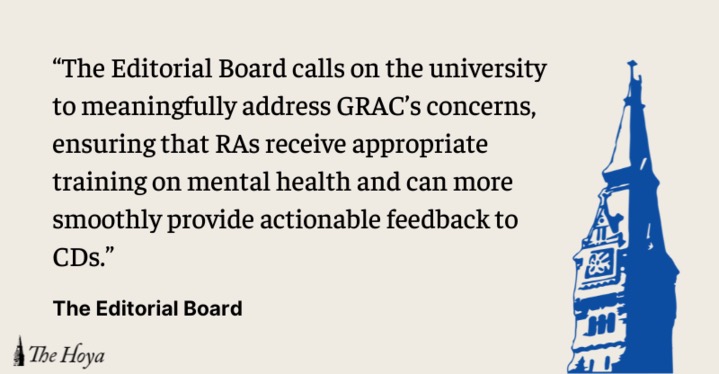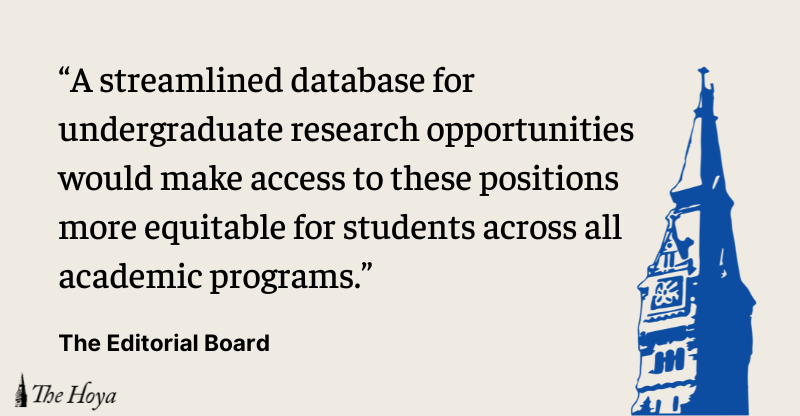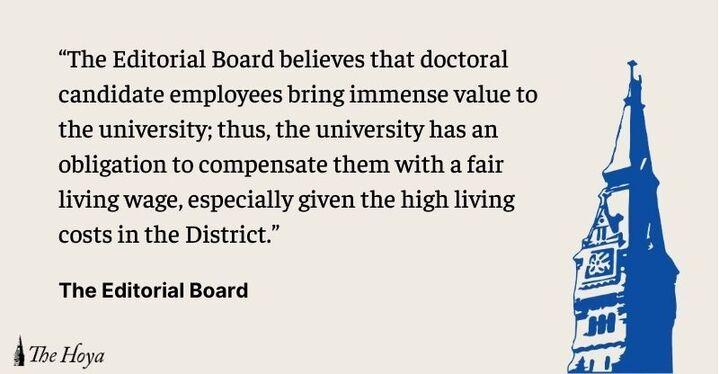Next year, Georgetown University students will not need to pay the Yates Field House standalone fee. Removing the Yates cost, however, hardly distracts from Georgetown’s consistent and hefty tuition increases.
The university announced in a Jan. 16 campuswide email that tuition would increase by a net 2.8 percent for the upcoming academic year, marking the eighth consecutive year that tuition rates will rise. With an estimated inflation rate of just 2.2 percent in 2018, tuition increases are dramatically higher than inflation.
Tuition increases beyond inflation rates are unfair, trapping students between paying the hefty price or giving up on their education. To alleviate student financial burdens, Georgetown should implement a five-year tuition freeze, only increasing costs at the inflation rate.
A tuition freeze would mean that any increases in tuition would only be adjusted for inflation and ensure that students face the same price tag for their entire time at Georgetown. The university’s current system cheats students by demanding a higher price than was agreed upon when they committed to the school.
The cost of education is skyrocketing nationwide: Tuition is rising faster than inflation and eight times faster than wages. Universities are also increasing tuition faster than financial aid can keep up.
At Georgetown, tuition hikes are deemed necessary largely because of the “rising costs of providing services” to students, according to a fact sheet from the Office of the Provost. However, with the university’s budget dedicated to services for students decreasing by a whopping 1.3 percent each year, this claim falls flat.
With inflation rates less than current tuition increases and university spending on services falling, the university should implement a freeze on rates.
Peer institutions have already applied a tuition freeze: The University of Texas at Austin locks tuition for four years; The George Washington University for five. Though need-aware, GW found that fixed tuition played a monumental role in students’ decisions to apply — 71 percent of students committed to the school for this reason, according to GW’s website.
Financial concerns are undoubtedly a critical factor in college decisions. By applying a tuition freeze, Georgetown could convince accepted students — who might otherwise choose another school for monetary reasons — to commit to the university.
With Ivy League schools offering more generous financial aid packages than Georgetown, a tuition freeze could also be an advantage in attracting talent to apply.
Moreover, fixing tuition rates is essential to improving socio-economic diversity on campus. Studies have found that diversity decreases at public four-year universities as tuition rises.
Though Georgetown is not a public university, the school clearly lacks socio-economic diversity: The median family income of the student body is $229,100, and 74 percent of students are from the wealthiest 20 percent.
To address the lack of socio-economic diversity on campus, Georgetown must freeze its tuition rates.
Though Georgetown’s 2.8 percent net tuition increase for the upcoming academic year is lower than the increase in the previous three years, the number is skewed. Tuition is actually rising by 3.6 percent, but the university pushed the mandatory standalone fee for Yates into the broader tuition rate, distorting the data.
Still, the tuition hikes help fund financial aid, theoretically improving access to the university. Though 21 percent of tuition dollars support financial aid, according to university spokesperson Matt Hill, this method creates a vicious cycle where tuition is being increased to aid those who cannot afford the new rates of tuition.
Freezing tuition is a crucial step that Georgetown must take if it sincerely seeks to alleviate students’ financial burdens and remedy the dismal socio-economic diversity on campus.
The university claims its current tuition system best serves students’ financial needs: A fixed-rate model would fail to account for negative changes in a family’s income, according to the Office of the Provost. Still, this reasoning ignores that students could receive financial aid if their finances deteriorated.
Rising tuition costs increase the financial burden for current students and can deter talent and socio-economic diversity. To make the university more accessible, Georgetown must restructure its tuition system. Stop extorting students — freeze the fee.
The Hoya’s editorial board is composed of six students and chaired by the opinion editor. Editorials reflect only the beliefs of a majority of the board and are not representative of The Hoya or any individual member of the board.














Serap çalışkan • Feb 16, 2021 at 7:41 am
there isn’t any iformation about the international students school fee. Could you please give me more information about it. Thank you so much for your kind help.
Illuminated Alum • Feb 19, 2019 at 9:23 pm
“The problem with socialism is that you eventually run out of other people’s money.” Tuition goes up to a) have students whose parents can afford it foot more of the bill for those who can’t; and b) to fund all the bs programs associated admin costs and overhead admin resources that students whine and insist the university implements. Money’s gotta come from somewhere.